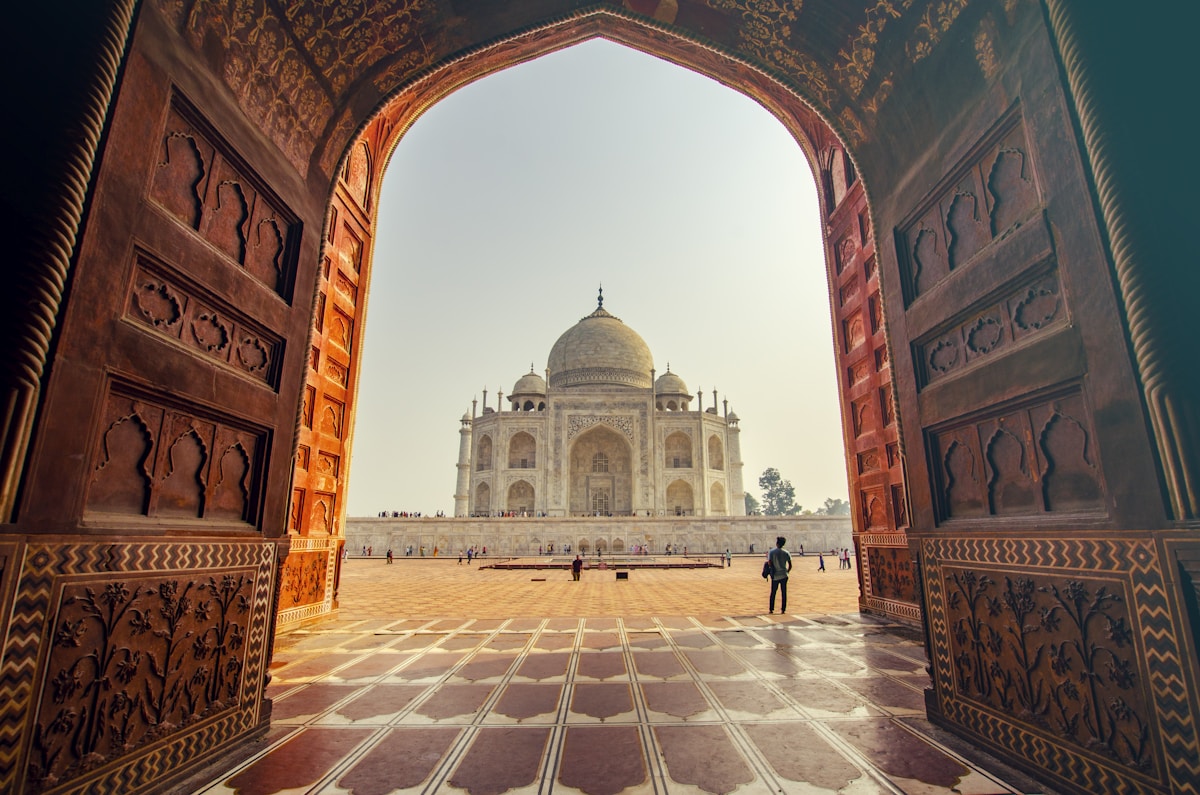Visiting Buddhist temples in Sydney offers beautiful cultural and spiritual experiences, but requires understanding proper etiquette. Whether visiting Vietnamese, Thai, Tibetan, or other Buddhist temples, respectful behavior honors sacred spaces and the communities who maintain them.
This guide covers essential etiquette for visiting any Buddhist temple in Sydney, helping you participate respectfully whether you're Buddhist, curious visitor, or cultural tourist.
Before You Visit
Research the Temple
Different Buddhist traditions have varying customs. Vietnamese Mahayana temples differ from Thai Theravada monasteries, which differ from Tibetan Vajrayana centers. Basic research prevents inadvertent disrespect.
Check temple websites for:
- Opening hours and service times
- Dress code requirements
- Photography policies
- Special events or ceremonies
- Whether visits are welcomed or require appointment
Understanding Temple Function
Temples are active religious spaces, not museums. People worship, meditate, and practice their faith here. Your presence should enhance rather than disturb this sacred purpose.
Dress Code
Modest dress is universally expected at Buddhist temples across all traditions.
Essential Requirements
Cover Shoulders: No tank tops, sleeveless shirts, or bare shoulders. Wear shirts with sleeves or bring a shawl to cover exposed shoulders.
Cover Knees: Shorts and short skirts are inappropriate. Wear long pants, long skirts, or dresses below the knee.
Remove Shoes: All Buddhist temples require removing shoes before entering shrine halls. Leave shoes in designated areas. Wear clean socks or go barefoot.
Avoid Revealing Clothing: No low-cut tops, see-through fabrics, or tight-fitting clothes. The emphasis is modesty and respect.
Additional Considerations
Remove Hats: Take off hats and sunglasses inside temple buildings.
Minimal Accessories: Remove or silence electronic devices. Minimize jewelry that might jingle or cause distraction.
Clean Presentation: Dress neatly and cleanly. This shows respect for sacred space.
Tradition-Specific Requirements
Thai Temples: Women should avoid touching monks or handing items directly to them. Use a cloth intermediary or place items where monks can retrieve them.
Tibetan Centers: Head coverings are sometimes required for women in certain ceremonies. Check beforehand or scarves are usually available.
Entering the Temple
Threshold Respect
Many temples have raised thresholds. Step over rather than on the threshold—it represents boundary between ordinary and sacred space.
Shoe Removal
Remove shoes before entering shrine halls. Place them neatly in designated areas with soles facing outward (considered more respectful in Asian cultures). Don't step on others' shoes.
Initial Gestures
Upon entering, some Buddhists perform three prostrations (bowing) to Buddha statue. As visitor, you're not required to prostrate, but stand quietly and respectfully while others do.
Inside the Temple
Seating and Positioning
Feet Positioning: Never point feet toward Buddha statues or monks. Sit cross-legged, kneel, or sit with legs folded to one side. If sitting in chairs, keep feet flat on floor.
Lower Than Buddha: Your head should remain lower than Buddha statue. Don't stand directly in front of altar or Buddha image—sit or kneel.
Seating Hierarchy: Monks and senior practitioners typically sit closer to altar. As visitor, sit toward back unless invited forward.
Behavior Guidelines
Silence: Speak quietly or maintain silence. Temples are contemplative spaces. Turn phones to silent mode.
Movement: Move slowly and mindfully. Don't run, make sudden movements, or cause disruption.
Attention: During ceremonies, maintain respectful attention even if you don't understand the language or ritual. Don't read, use phones, or engage in distracting activities.
Interacting with Monks and Nuns
Showing Respect: When greeting monks or nuns, slight bow with hands in prayer position (anjali mudra) is appropriate. Address them respectfully—"Venerable," "Thầy" (Vietnamese), "Ajahn" (Thai), or "Rinpoche" (Tibetan).
Physical Contact: In most traditions, women should not touch monks. Men can interact more freely but maintain appropriate boundaries.
Questions: Monks and temple volunteers generally welcome sincere questions about Buddhism and temple practices. Ask respectfully at appropriate times—not during ceremonies.
Photography
Photography policies vary significantly between temples and require careful attention.
General Guidelines
Always Ask Permission: Never assume photography is allowed. Ask temple staff or volunteers before taking any photos.
No Flash: Flash photography disturbs meditation and damages artwork. Use natural light only.
Ceremonies: Photography during ceremonies is often prohibited. It distracts participants and trivializes sacred rituals.
People: Don't photograph people without permission, particularly during prayer or meditation. This violates privacy and respect.
Sacred Objects: Some temples prohibit photographing certain Buddha statues or sacred objects.
Respectful Photography
If photography is permitted:
- Keep cameras quiet
- Don't position yourself disruptively
- Photograph architecture and art, not worshippers
- Don't use selfie sticks or tripods without permission
- Share photos respectfully, not mockingly
Offerings and Donations
Making Offerings
If you wish to make offerings—incense, flowers, candles—observe how others do so and follow their example.
Incense: Light incense from candles (not lighters), hold at eye level while bowing, then place in designated incense holders.
Flowers: Offer fresh flowers at altar, arranged respectfully.
Food: Food offerings to Buddha or monks follow specific protocols. Ask temple staff for guidance.
Monetary Donations
Temples operate on donations. Contributing supports temple maintenance, monk support, and community programs.
Donation Boxes: Most temples have clearly marked donation boxes. Any amount is appreciated.
No Obligation: Donations are voluntary. Don't feel pressured to donate amounts beyond your means.
Tax Deductibility: Many Buddhist temples in Australia are registered charities, making donations tax-deductible. Request receipt if needed.
Participating in Ceremonies
If you attend ceremonies or services, respectful participation matters even if you don't understand the language.
What to Do
Follow Along: Sit, stand, or bow when others do. You don't need to chant if unfamiliar, but maintain attention.
Accept Blessings: If monks offer blessings (sprinkling water, tying strings), accept graciously even if not Buddhist. It's a gesture of goodwill.
Communal Meals: If invited to eat, accept respectfully. Buddhist vegetarian food is part of religious practice and community bonding.
What to Avoid
- Don't leave during ceremonies (wait for breaks)
- Don't talk during chanting or meditation
- Don't eat or drink in shrine halls
- Don't point at Buddha or monks
Children at Temples
Children are generally welcome at Buddhist temples, but parental supervision is essential.
Teach Respect: Explain that temples are sacred spaces requiring quiet, respectful behavior.
Supervision: Monitor children to prevent running, loud talking, or touching sacred objects.
Family Areas: Some temples have areas specifically for families with young children where noise is more acceptable.
Common Mistakes to Avoid
1. **Treating temples as tourist attractions** - They're active religious spaces
2. **Inappropriate dress** - Always err on side of modesty
3. **Loud talking or laughter** - Maintain quiet atmosphere
4. **Touching sacred objects** without permission
5. **Climbing on statues** or using them as photo props
6. **Ignoring "no entry" signs** - Some areas are restricted to ordained monastics
7. **Showing affection** - Public displays of affection are inappropriate in temples
Specific Traditions
Vietnamese Temples
Vietnamese temples are generally welcoming and accommodating. Services are in Vietnamese, but visitors are welcome. Incense offering is central practice. Vietnamese temples often serve food after ceremonies—accepting meals builds community connection.
Thai Temples
Thai monasteries follow strict monastic codes. Women must be particularly careful not to touch monks. The morning alms round requires specific etiquette if you wish to offer food. Meditation instruction is often available in English.
Tibetan Centers
Tibetan Buddhist centers incorporate elaborate rituals. Don't be intimidated by complexity—just observe respectfully. Prostrations and offerings follow specific forms. Ask for guidance if participating.
Final Thoughts
Buddhist temple etiquette fundamentally derives from respect—for sacred space, religious practice, community, and cultural traditions different from your own.
When uncertain, observe before acting. Ask questions respectfully. Approach with sincerity and genuine interest rather than tourism's superficial engagement.
The Buddhist communities in Sydney generally welcome sincere visitors regardless of religious background. By following these guidelines, you'll honor their traditions while enriching your own understanding of Buddhism and multicultural Australia.

























